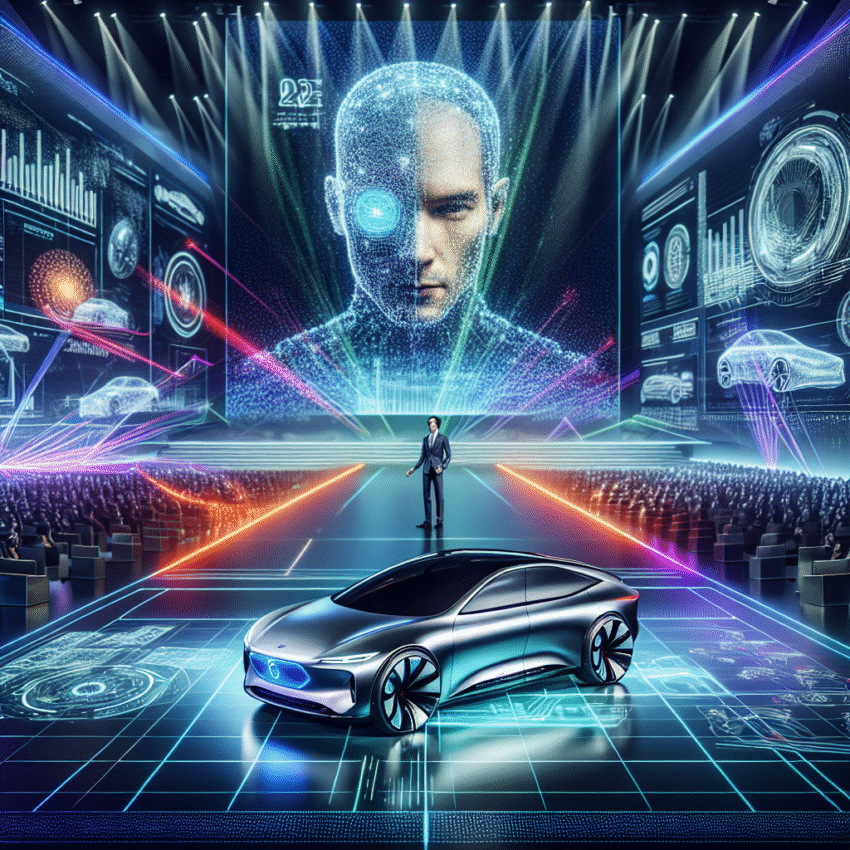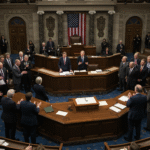Elon Musk Unveils Groundbreaking Self-Driving Technology at Tesla Event
At the highly anticipated Tesla event, billionaire entrepreneur and CEO Elon Musk unveiled Tesla’s state-of-the-art self-driving technology, captivating audiences with its potential to revolutionize the automotive landscape. Attendees witnessed a demonstration of advanced features that are set to enhance safety, convenience, and overall driving experience that extends beyond anything previously available in the auto industry.
### The Evolution of Tesla’s Self-Driving Capabilities
Tesla has been at the forefront of electric vehicle (EV) innovation since its inception. With each new model, the company has launched improved software algorithms, cutting-edge sensors, and robust hardware. More than just electric cars, Tesla has positioned itself as a leader in automotive AI and autonomous driving capabilities. The recent unveiling illustrated the culmination of years of research and development that began with early iterations of Autopilot.
### Advanced AI Algorithms
One of the cornerstones of Tesla’s self-driving technology is its advanced AI algorithms capable of real-time learning and data processing. During the event, Musk explained how Tesla vehicles utilize neural networks that analyze vast amounts of data collected from the fleet of cars on the road. This cloud-based architecture allows the software to learn from millions of driving scenarios, improve over time, and adapt to new environments.
### Hardware Overhaul
The latest Tesla models are equipped with the full self-driving (FSD) computer (often referred to as Hardware 3), which features specialized chips built specifically for deep learning and neural networks. This hardware leap enables faster processing power, allowing for quicker and more efficient decision-making. During the launch, engineers demonstrated the car’s capabilities in various challenging scenarios, such as intricate highway merges and navigating through crowded urban streets.
### Enhanced Sensor Suite
Musk emphasized the significance of the sensor suite in this groundbreaking technology. Tesla vehicles are geared up with an extensive array of sensors, including radar, cameras, and ultrasonic sensors. The event showcased a unique feature: a 360-degree view of the vehicle’s surroundings, allowing real-time analysis of obstacles, pedestrians, and road conditions. This multisensory data provides a robust situational awareness, essential for making split-second driving decisions.
### Real-Time Data Collection and Processing
An integral aspect of the self-driving technology is Tesla’s ability to collect real-time data during vehicle operation. This data is not only used for individual vehicle improvement but is aggregated and analyzed across the entire Tesla fleet. This fleet-learning capability allows for continuous improvement of the autonomous driving algorithms. Musk highlighted how feedback from various driving conditions worldwide shapes the software’s learning curve, making the self-driving system highly adaptable.
### User Interface and Experience
Musk and his team also demonstrated the enhanced user interface designed with the driver in mind. The new FSD software interface prominently features a dashboard that monitors real-time data streams, providing essential information that helps the driver understand how the vehicle perceives its environment and executes real-time decisions. Tesla’s focus on transparency is paramount, enabling drivers to see notifications and alerts that enhance their interaction with the autonomous technology.
### Level 5 Autonomy: The Ultimate Goal
During the event, Musk boldly reiterated Tesla’s goal of achieving Level 5 autonomy—fully self-driving vehicles that require no human intervention. He discussed the rigorous testing phases that the technology has undergone, including simulations and real-world scenarios. The implications of Level 5 autonomy could transform urban mobility, reducing accidents caused by human error and enhancing the efficiency of transportation systems.
### Safety Features and Regulatory Compliance
Safety is paramount in Musk’s vision for self-driving vehicles. The event included a segment dedicated to Tesla’s safety features, which are designed to prevent accidents before they happen. Automated emergency braking, collision avoidance, and lane-keeping assistance are all integral components of the self-driving technology.
Musk highlighted the collaboration with regulatory bodies to ensure compliance with safety standards while pushing the boundaries of innovation. The company intends to work closely with government agencies to establish regulations that support the deployment of autonomous vehicles while retaining a high level of public safety.
### Future Plans for Autonomous Taxis
In addition to personal vehicle ownership, Musk shared intriguing plans for Tesla’s autonomous taxi fleet. By leveraging its self-driving technology, Tesla aims to launch a ride-hailing service that operates without human drivers. This service could significantly reduce transportation costs while providing consumers with an eco-friendly alternative to conventional taxis. Musk envisions a future where Tesla owners can use their vehicles as money-generating assets during times of inactivity, which would disrupt the traditional taxi industry.
### The Road Ahead
As the event unfolded, questions lingered about the timeline for the rollout of this groundbreaking technology. Musk indicated that Tesla is in the final stages of development and hinted at a possible full release in the next year. However, he stressed that thorough testing must be executed before widespread adoption.
The unveiling of Tesla’s self-driving technology marks a significant milestone not just for the company but for the automotive industry as a whole. With a focus on AI integration, safety protocols, and consumer experience, Tesla continues to position itself as a leader in the race to revolutionize transportation.
### Public Reactions and Industry Impact
The excitement generated by the Tesla event has reverberated throughout the tech and automotive sectors. Investors, automakers, and tech enthusiasts are keenly observing how Tesla’s advancements will shape the future of mobility. Social media platforms erupted with discussions, generating buzz around potential competitive responses from other automakers who may now feel pressure to accelerate their own autonomous driving programs.
### Collaboration and Open Source Initiatives
Musk hinted at possible collaborations with other tech firms specializing in AI, robotics, and automotive technology. Emphasizing the importance of knowledge sharing, he expressed openness to collaborating with external experts to implement the most advanced features. This approach aligns with the growing trend toward open-source initiatives within the tech community, enabling rapid advancements through shared resources and expertise.
### Conclusion
Elon Musk’s revelation of Tesla’s groundbreaking self-driving technology at the recent event sets a new benchmark in the automotive industry. With an array of sophisticated systems in place, Tesla aims to redefine not only how we drive, but how we experience mobility as a whole. As this technology evolves, the implications could ripple through various sectors, influencing everything from urban planning and public transportation to insurance and environmental policies, paving the way for a future that prioritizes efficiency, safety, and sustainability in transportation.




